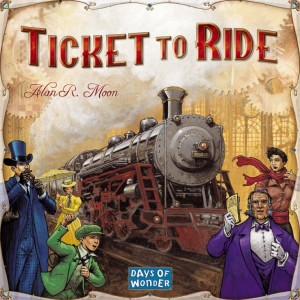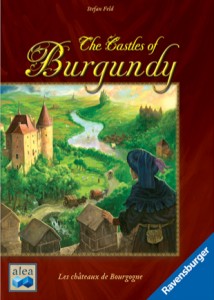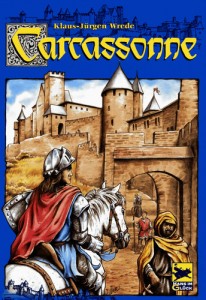 These last 7 days we have looked at a fair amount of train games and one of the mechanics that drives them. I figured what better way to wrap up than where we started with another installment of our Favorite Games series. Last Friday we looked at Empire Builder, followed by the Crayon Rails System, and then British Rails. Today we shall look at a game by another company using other mechanics in; Ticket to Ride (the original).
Released: 2004
Designer: Alan Moon
Plays: 2-5
EPT: 45 minutes
In the last 10 years Ticket to Ride has experienced fantastic success meeting the expectations to some and to the surprise of others. Following the games release it has been regionalized with European, Nordic, India and other maps and versions being...
These last 7 days we have looked at a fair amount of train games and one of the mechanics that drives them. I figured what better way to wrap up than where we started with another installment of our Favorite Games series. Last Friday we looked at Empire Builder, followed by the Crayon Rails System, and then British Rails. Today we shall look at a game by another company using other mechanics in; Ticket to Ride (the original).
Released: 2004
Designer: Alan Moon
Plays: 2-5
EPT: 45 minutes
In the last 10 years Ticket to Ride has experienced fantastic success meeting the expectations to some and to the surprise of others. Following the games release it has been regionalized with European, Nordic, India and other maps and versions being...
Favorite Fridays – Ticket to Ride
 These last 7 days we have looked at a fair amount of train games and one of the mechanics that drives them. I figured what better way to wrap up than where we started with another installment of our Favorite Games series. Last Friday we looked at Empire Builder, followed by the Crayon Rails System, and then British Rails. Today we shall look at a game by another company using other mechanics in; Ticket to Ride (the original).
Released: 2004
Designer: Alan Moon
Plays: 2-5
EPT: 45 minutes
In the last 10 years Ticket to Ride has experienced fantastic success meeting the expectations to some and to the surprise of others. Following the games release it has been regionalized with European, Nordic, India and other maps and versions being...
These last 7 days we have looked at a fair amount of train games and one of the mechanics that drives them. I figured what better way to wrap up than where we started with another installment of our Favorite Games series. Last Friday we looked at Empire Builder, followed by the Crayon Rails System, and then British Rails. Today we shall look at a game by another company using other mechanics in; Ticket to Ride (the original).
Released: 2004
Designer: Alan Moon
Plays: 2-5
EPT: 45 minutes
In the last 10 years Ticket to Ride has experienced fantastic success meeting the expectations to some and to the surprise of others. Following the games release it has been regionalized with European, Nordic, India and other maps and versions being...






